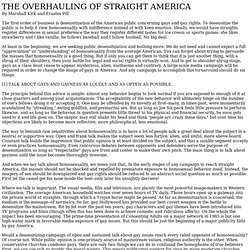

Psychology + marketing. Subliminal Messages Part 1 (Full) Psychological manipulation. Psychological manipulation is a type of social influence that aims to change the perception or behavior of others through underhanded, deceptive, or even abusive tactics.[1] By advancing the interests of the manipulator, often at another's expense, such methods could be considered exploitative, abusive, devious, and deceptive.

Social influence is not necessarily negative. For example, doctors can try to persuade patients to change unhealthy habits. Social influence is generally perceived to be harmless when it respects the right of the influenced to accept or reject and is not unduly coercive. Depending on the context and motivations, social influence may constitute underhanded manipulation. Requirements for successful manipulation[edit] Visual language. A visual language is a system of communication using visual elements.

Speech as a means of communication cannot strictly be separated from the whole of human communicative activity that includes the visual[1] and the term 'language' in relation to vision is an extension of its use to describe the perception, comprehension and production of visible signs. Overview[edit] An image that dramatizes and communicates an idea presupposes the use of a visual language.
Just as people can 'verbalize' their thinking, they can 'visualize' it. A diagram, a map, and a painting are all examples of uses of visual language. The elements in an image represent concepts in a spatial context, rather than the linear form used for words. Visual Language[edit] Visual units in the form of lines and marks are constructed into meaningful shapes and structures or signs. Imaging in the mind[edit] Meaning and expression[edit] Perception[edit] The sense of sight operates selectively.
Innate structures in the brain[edit] THE OVERHAULING OF STRAIGHT AMERICA - By Marshall Kirk and Erastes Pill. THE OVERHAULING OF STRAIGHT AMERICA By Marshall Kirk and Erastes Pill The first order of business is desensitization of the American public concerning gays and gay rights.

To desensitize the public is to help it view homosexuality with indifference instead of with keen emotion. Ideally, we would have straights register differences in sexual preference the way they register different tastes for ice cream or sports games: she likes strawberry and I like vanilla; he follows baseball and I follow football. No big deal. At least in the beginning, we are seeking public desensitization and nothing more.
The principle behind this advice is simple: almost any behavior begins to look normal if you are exposed to enough of it at close quarters and among your acquaintances. The way to benumb raw sensitivities about homosexuality is to have a lot of people talk a great deal about the subject in a neutral or supportive way. And when we say talk about homosexuality, we mean just that. "... "... Or "... Sexual Orientation Section, Guide to Family Issues. Homosexual_propaganda.pdf. Free Stock Photos for Commercial & Personal Use. Language of Persuasion. The goal of most media messages is to persuade the audience to believe or do something.

Hollywood movies use expensive special effects to make us believe that what we’re seeing is real. News stories use several techniques – such as direct quotation of identified sources – to make us believe that the story is accurate. The media messages most concerned with persuading us are found in advertising, public relations and advocacy. Commercial advertising tries to persuade us to buy a product or service. Public relations (PR) "sells" us a positive image of a corporation, government or organization. These "persuaders" use a variety of techniques to grab our attention, to establish credibility and trust, to stimulate desire for the product or policy, and to motivate us to act (buy, vote, give money, etc.)
We call these techniques the "language of persuasion.” Learning the language of persuasion is an important media literacy skill. Basic persuasion techniques 1. 2. 3. 4. 5. 6. 7. 8. How to Persuade People with Subconscious Techniques: 12 Steps. Examples of the Rule of Three.